Many Wisconsin families struggle to make healthy choices on a limited budget. FoodWIse, University of Wisconsin-Madison Extension’s nutrition education program funded by SNAP-Ed, helps tens of thousands of our state’s residents every year to stretch limited food dollars, address chronic disease, and start healthy living at an early age.
“My child came home willing to try new foods he previously would have refused,” said a Chippewa County parent of a kindergartener whose class had a visit from an Extension FoodWIse educator. “He was excited to give new foods a fair try and has discovered he likes some of them. He talks about the importance of eating balanced meals and moving his body every day.”
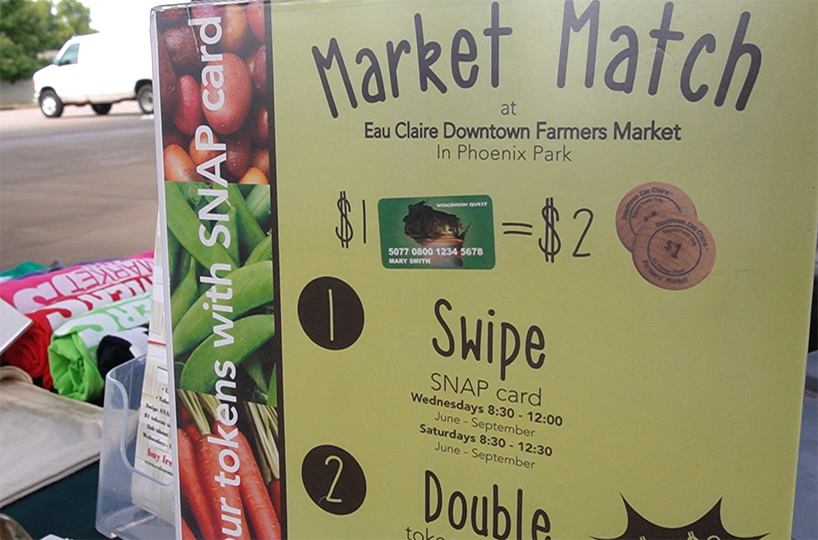
Funded by the SNAP National Nutrition Education and Obesity Prevention Program (“SNAP-Ed”), FoodWIse could be significantly impacted by recent congressional action that proposes the elimination of all funding for SNAP-Ed.
FoodWIse employs over 120 educators and staff across Wisconsin, working in nearly every county to deliver nutrition education and support community health initiatives. The annual SNAP-Ed budget for FoodWIse is over 8 million, which supports direct education for over 35,000 participants annually, as well as broader community initiatives that reach more than 98,000 people across the state. For every $1 spent, SNAP-Ed returns at least $5.36 in future health and economic benefits.
FoodWIse’s hands-on lessons in schools, community centers, farmers markets, and other community-based settings create accessible opportunities for healthy living.
“My child has trouble trying new foods. They came home after the [FoodWIse] visits excited about the new food and grains and having the family try their recipes,” said a Waukesha parent.
FoodWIse impacts Wisconsin communities by:
Helping families stretch limited food dollars and reduce food waste
SNAP is a federal food assistance program that helps low-income individuals buy food and prevent food insecurity. Nearly 78% of SNAP benefits are redeemed within two weeks of receipt. Research shows that running out of benefits increases hospital admissions and school disciplinary problems among SNAP households later in the month. For that reason, helping families learn better strategies for managing their food resources is crucial.
FoodWIse teaches SNAP participants the skills needed to prepare affordable, nutritious meals. Participants learn to manage their SNAP benefits by reading and using food labels to make decisions about purchases, planning meals, shopping with a grocery list, and comparing food prices to find the best value. Research suggests that these skills translate to healthier eating habits, reduced food waste, and improved food security.

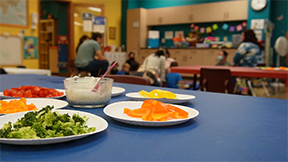
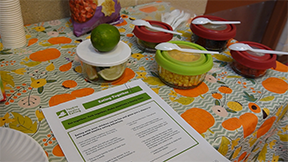
Stretching food dollars and reducing food waste in Sheboygan County
FoodWIse in Sheboygan County partnered with the Housing Authority to provide nutrition education focusing on food resource management to tenants at a housing facility for elderly, disabled, and low-income individuals and families. The tenants received a bag of food each month from the food bank. FoodWIse led a 6-week nutrition education series on food budgeting and healthy eating, with recipes that used foods that were often unfamiliar to participants.
“One recipe included lentils as the main ingredient, because several tenants were unfamiliar with how to use the lentils in their monthly bag. One of the tenants mentioned that she appreciated learning about lentils being a healthy source of protein and she cooked them for dinner that night! By the end of the series, word of mouth had spread, and more people expressed interest in attending the lessons.” -Janeth Orozco, Sheboygan County FoodWIse educator
At the end of a FoodWIse nutrition education series:
- 63% of participants reported comparing prices before buying food
- 48% of participants reported identifying foods on sale or using coupons to save money
- 61% of participants reported shopping with a list
Reducing chronic disease
Food insecurity is linked to costly and common health problems like diabetes, obesity, and hypertension in adults, and asthma, mental health concerns, and poor educational performance in children. With limited financial resources, households experiencing food insecurity often stretch their budgets in ways that can harm their health, such as postponing medical care or rationing infant formula.
FoodWIse educators work with SNAP-Ed eligible community members to teach them how food and physical activity impact their health. Programs like StrongBodies provide hands-on opportunities for participants to learn new skills and make healthy changes that can prevent chronic disease.
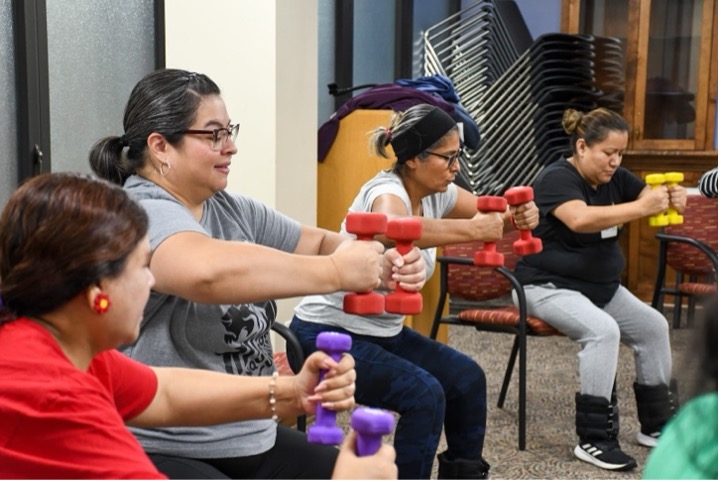
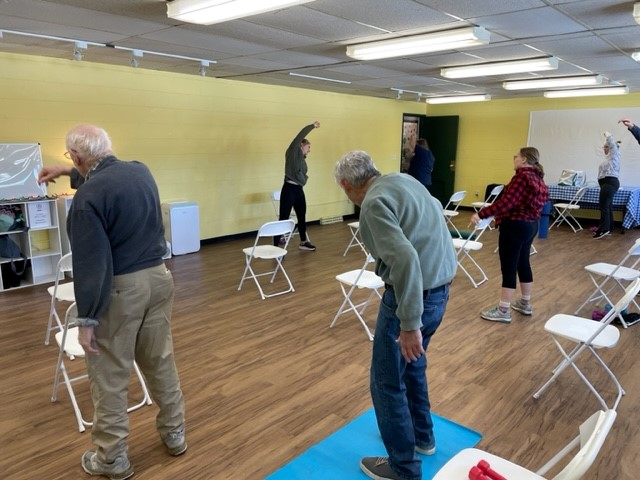

Reducing chronic disease with StrongBodies
Research shows that moderate strength-based exercise 2-3 times per week helps prevent bone density loss, especially in women, and reduces injuries due to falls. StrongBodies teaches adults of all ages how to use weights safely and eat healthily. Through community-based strength training programs, participants improve fitness, build strength, gain confidence, connect socially, and improve their overall well-being. Designed for adults as they age, participants gain strength, improve mobility, and reduce the risk of conditions like osteoporosis, heart disease, and diabetes.
“When I attended StrongBodies at first, I just joined because others did. But I started learning all the things I hadn’t realized about food and what was in it. Exercising helped me to get my strength back and I love the repetition because it allows me to see my progress. I found out I was diabetic and considered a fall risk,” said one 80-year-old participant. Since beginning StrongBodies, she has lost weight, is no longer using a walker, and has stopped giving herself insulin shots twice a day. “The best thing is that I feel and see the results, and I need this class. Every time I am able to attend StrongBodies, it always helps me to focus. New info about food allows me to eat differently, and for me, the information about balance and exercises has allowed me to come back from two serious health issues, cancer and diabetes.”
Starting healthy living at an early age
There are increased benefits to teaching healthy living at an early age, because chronic disease risks compound over time. Through partnerships with local school districts, FoodWIse introduces children to new fruits and vegetables while teaching parents and caregivers to plan, shop for, and prepare healthy meals. Exposing youth to fruits, vegetables, and other healthy options early helps children develop healthy eating habits that continue later in life, reducing their risk of chronic disease both in childhood and adulthood.
FoodWIse educators partner with local schools and after-school programs to deliver nutrition education and help build a school environment that provides opportunities for healthy living.
“Engaging children during the school day is an important way to build healthy living behaviors and promote access to nutritious foods and physical activity opportunities,” said Amber Canto, Assistant Dean and Director of Extension’s Health & Well-Being Institute. Programs like Harvest of the Month engage students, parents, teachers, and local farmers so they can work together to promote healthy choices during the school day.



Starting at an early age with Harvest of the Month
FoodWIse educators go into classrooms, after-school programs, and school gardens to teach students about healthy living. They also work with school staff to provide healthy options and opportunities for students and their parents. Through Harvest of the Month, schools feature a Wisconsin-grown fruit or vegetable as part of a meal or snack program. Cafeteria and classroom activities and taste tests encourage students to try new foods and learn more about their food choices. Families also receive information about the Harvest of the Month, including recipes and preparation tips.
“At Bayfield School, the Harvest of the Month program has really taken off—it’s something the students look forward to every month. Our FoodWIse educator does a fantastic job offering taste tests and sharing fun, educational info about each featured item in the lunchroom. It’s been amazing to see how eager the kids are to try new foods, both in samples and on the lunch menu. Some are even asking their families to buy the produce so they can enjoy it at home. That kind of excitement around local, seasonal foods is exactly where healthy habits begin.” – Stephanie Bakker, FoodWIse Coordinator for Ashland, Bayfield, and Iron Counties
The 2024 Harvest of the Month campaign:
- Reached over 15,000 individuals across 44 locations
- Between 2021 and 2024, over 30% of food service staff expanded their use of local produce in schools
After youth participated in Harvest of the Month:
- 60% of schools saw increased willingness to try new fruits and vegetables
- 55% of schools said students ate more fruits and vegetables during school meals
Increasing local access to healthy foods
FoodWIse works to improve access to healthy foods and physical activity in local communities. Access is especially difficult in the 43% of FoodWIse sites located in rural areas where food prices are often higher, transportation to food stores is more challenging, and the availability of affordable, healthy food options is limited.
Working within communities, FoodWIse educators assess the local barriers that SNAP recipients face in buying healthy food and accessing opportunities for physical activity. They build partnerships with local organizations and producers to make healthy living possible. Programs like Growing Together demonstrate how local barriers can be overcome through partnerships.



Increasing local access through food pantries
FoodWIse educators partner with local food pantries to deliver nutrition education and food resource management training to food pantry guests. They also work with local food pantries to ensure guests have healthy, fresh food options through the pantry.
“Food pantries are an important part of the emergency food system. But a variety of fruits and vegetables have not always been readily available for food pantry guests,” said Amber Canto, Assistant Dean and Director of Extension’s Health & Well-Being Institute. “Through our Growing Together program, we work with Master Gardeners and other local partners to expand access to fresh produce through on-site gardens at pantries and community gardens that distribute produce to pantries, schools, and meal sites. Community garden sites often also serve as settings for hands-on nutrition education.”
Additionally, FoodWIse educators train volunteers in safe food handling and work with staff to create systems, strategies, and policies that support ongoing access to healthy and safe food
“FoodWIse nutrition programming is unique. Our programs are evidence-based and responsive to unique community contexts to ensure we are achieving the greatest impact possible. We work directly with individuals and families to teach them about living healthy. And we also work closely with hundreds of community partners to create healthier communities and reduce nutrition and physical activity barriers,” said Canto. FoodWIse works at multiple levels, aligning and integrating programs promoting healthy behaviors among individuals with supporting changes to policies and the physical and social environments in a community. This multi-level approach magnifies impact. “Catalyzing connections is a central part of Extension’s work. FoodWIse educators work in and across communities, bridging information and resources for action. We can all contribute to supporting healthier communities. Working in partnership with others strengthens community health and avoids duplication.”
Supporting the local agricultural economy
A strong local agricultural economy benefits everyone. FoodWIse connects local producers with SNAP recipients so they have easier access to fresh produce and can contribute to the local economy.
FoodWIse educators organize and participate in community coalitions to strengthen local food systems. Through partnerships, FoodWIse has helped local school districts incorporate locally sourced foods into their school meals and has increased SNAP use at farmers markets.
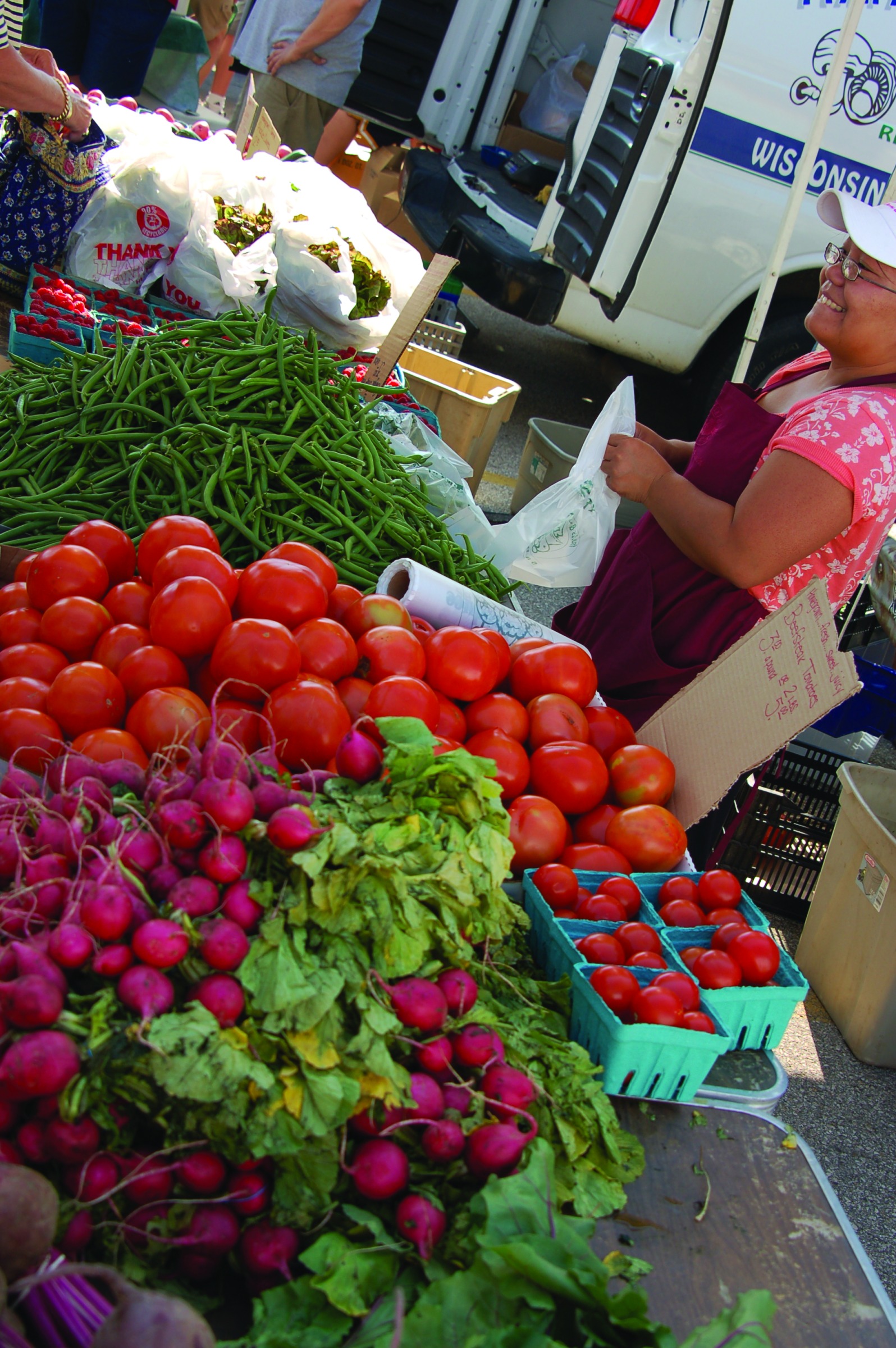
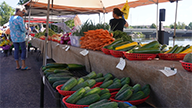

Supporting the local agricultural economy through EBT programs at markets
Shopping with SNAP benefits at farmers markets improves access to nutritious food and supports local economies by boosting sales for small-scale farmers. However, vendors at farmers’ markets are often unable to accept SNAP as payment because they lack the equipment or authorization to accept EBT (Electronic Benefits Transfer) cards.
In 2022, farmers’ markets redeemed just 0.02% of all SNAP benefits distributed in Wisconsin. To expand access to local produce among low-income community members, FoodWIse helps market managers put systems in place to accept EBT benefits and conducts outreach to SNAP-eligible communities about the ability to shop using food benefits at the market. These efforts have enabled 48 farmers markets across Wisconsin to accept SNAP benefits.
“Having someone say ‘yes, that’s the right path to take’ that’s in a professional position is so important. This system is so complicated and just having someone affirming our steps is really helpful. Helping with the steps, introductions. FoodWIse empowers market managers and provides resources, without doing it for us. We saw about 6,000 more dollars come through just the EBT program, about $400 per vendor in our first year with minimal marketing.” – Meliss Haack, Central Wisconsin Regional Farmers Market Coordinator
SNAP-Ed works for kids, families, and Wisconsin communities. This program is an investment in our state and our future.



